Content
Despite the fact that Ivan Michurin also drew attention to the blackberry, and even bred two varieties - Izobilnaya and Texas, the culture in Russia and neighboring countries did not become widespread. But across the ocean, whole plantations of tasty and healthy berries are laid. It is not surprising that almost all new products that appear on the market are created by the efforts of North American, and not domestic breeders. One of the best is the Columbia Star blackberry variety.
Breeding history
Blackberry variety Columbia Star is one of the newest and most promising varieties. It was created by Chad Finn of the University of Oregon under the patronage of the USDA. The first sample of this blackberry variety was obtained in 2008, from 2009 to 2012 it was tested. Columbia Star was registered in 2014, and in 2015 a patent was issued for it.
The Columbia Star blackberry is a cross between a non-patented New Zealand variety NZ 9629-1 and the Orus 1350-2 form.
In fact, Columbia Star is mixed with the genes of a large number of blackberry cultivars and raspberry hybrids. The well-known Lincoln Logan variety was used as a donor for the stiffness and flexibility of the lashes.
The Columbia Star Blackberry was originally created as a perfect-tasting crop with a beautiful berry that would be easy to grow on an industrial scale.
Description of berry culture
Before describing the variety, you need to give some clarification. Blackberry Columbia Star - new. It has been tested in the United States. But even there the oldest bush is not yet 10 years old. For a variety test, this is very small.
Russian conditions are very different from North American ones. Even if we assume that the first blackberry bush of the Columbia Star variety came to us in 2014 and was not "disassembled" into cuttings, but left as an experimental plant, 4 years is a short period. We cannot know exactly how the cultivar will behave in 3-5 years, what will be its productive age, yield, disease resistance during the years of epizootics. Even the size of the blackberry is highly dependent on local conditions.
So you have to rely on the little experience of overseas manufacturers and trust the statements of the US Department of Agriculture. But judging by the advertising campaign deployed there and the areas of the already established blackberry plantations, the Columbia Star variety is really worthy of attention. Moreover, it promises to be a real sensation.
General understanding of the variety
Columbia Star blackberries need support. Its shoots, even in the first year after planting, give an increase of 3-4 m, later they reach 4-5 m. The scourges are flexible, without thorns, strong. They are easy to form, tie to a support and remove from it for the winter. If the shoots are not touched, they will creep like a dewdrop.
Lateral branches are strong. The average length of internodes is a little more than 5 cm. Mature leaves are large, green, young ones are light, almost lettuce-colored. The root system is well developed.
Fruiting occurs on the shoots of the previous year.
Berries
Large, more than 3 cm in diameter, white flowers are collected in clusters of 3-4 pieces. The cone-shaped berries of the Columbia Star blackberry are one-dimensional, large. They have a dark brown color with a burgundy tint, more inherent in raspberry-blackberry hybrids. The flesh is reddish on the cut.
The average weight of Columbia Star blackberries declared by the manufacturer is 7.8 g. Some sellers of seedlings call the figure 10-12 or even 16-18 g. Whether this is true in our conditions - only time will tell. Most likely, such a declared size of berries is just a publicity stunt. In fact, 8 g blackberries are already considered large.
In the technical characteristics of the Columbia Star variety, the diameter of the fruit is stated to be 1.88 cm, the length is 3.62-3.83 cm. The fragrant pulp is tender, juicy, elastic, the drupes are small and are almost imperceptible when eaten fresh. The taste is balanced, with raspberry and cherry notes, sweet and sour. Columbia Star blackberry tasting score - 4.7 points.
Characteristic
The characteristics of Columbia Star blackberries as varieties with exceptional consumer qualities have not stood the test of time. We can only hope that he will show himself well and take root in our conditions.
Main advantages
Like all dews, the Columbia Star variety has an average winter hardiness and needs shelter. This blackberry easily tolerates 25 degrees of frost under favorable conditions. At temperatures below -14⁰C without shelter in a snowless winter, with periodic thaws, followed by a sharp cold snap, the plant may die.
Columbia Star has high drought tolerance. She needs regular watering only in the first year after planting. Do not forget that blackberries are a shrub, not a fruit tree, and they need more moisture, especially in the south.
Best of all, blackberries grow on loose loams, well seasoned with organic matter. The soil should be slightly acidic.
Growing Columbia Star blackberries is not troublesome if you cut and tie up the bush in time. If you neglect these procedures, you will quickly get impassable thickets, which are difficult to cope with. And although the shoots of the Columbia Star blackberry are completely devoid of thorns, it will be difficult to put the bush in order. And the harvest, firstly, will fall, and secondly, it will be difficult to harvest.
Columbia Star blackberries do not lose their shape for a long time and are easy to transport.
Flowering period and ripening time
The thornless blackberry variety Columbia Star has not yet managed to show the real terms of fruiting and flowering in our conditions. It is grown for only 2-3 years, and this is the time of adaptation of the culture. Having collected the necessary information, it will be possible to talk about the exact indicators of flowering and fruiting in 2-3 years. In addition, Columbia Star blackberries are planted everywhere - in central Russia, Belarus, in the south.
Today, we can say with confidence that in the south, the variety blooms in mid-to-late June. In the middle lane, of course, later. Fruiting is more difficult. The manufacturer claims that it is stretched out and should take place in the mid-term.
Yield indicators
When creating a new variety, we must pay attention to its yield. In America, it is believed that high productivity is the lot of technical cultivars. For dessert varieties, such as the Columbia Star blackberry, the main thing is a delicious, beautiful berry. And the yield can be average.
Despite this, our seedling vendors describe productivity as “phenomenal”, “record”, and the Columbia Star brambles are touted as producing the highest yields. In fact, under the conditions of the United States, the variety yields 7.5 kg per bush, or 16.75 t / ha. This is the average yield.
How the variety will show itself in our conditions is generally unknown. There is no such data. And sooner than in 3-4 years will not be.
Scope of berries
Columbia Star blackberries are delicious and have a rich cherry and raspberry aroma. They are eaten fresh, especially since the transportability of the fruits is good, and they can be stored in a cool room without losing marketability for a long time. Processed products - preserves, wine, jellies, jams are tasty and healthy.
Disease and pest resistance
The Columbia Star variety is resistant to typical diseases and pests of the crop. Of course, it can be affected during epizootic years or in close proximity to infected raspberry or blackberry bushes.
Advantages and disadvantages
Columbia Star is considered promising. If he shows himself as the breeders plan, he will become one of the best. Its advantages include:
- Absolute lack of thorns.
- Delicious berries (4.7 points).
- Disease and pest resistance.
- The yield of the Columbia Star blackberry variety is average, but for a dessert berry it is good.
- Prolonged fruiting - more than 2 months.
- Good transportability and keeping quality of berries.
- The possibility of mechanized harvesting.
- High drought tolerance.
- Self-pollination.
- The shoots of this blackberry bend well - they can be easily attached to the support or removed from it.
The disadvantages include:
- The high cost of planting material.
- Lack of information about the Columbia Star blackberry. This is due to the fact that the variety is new. Over time, this defect will correct itself.
- The need to cover the culture for the winter. Unfortunately, this today applies not only to the Columbia Star variety.
Reproduction methods
Blackberries are easy to propagate. There are several ways:
- Seeds. If you only have one cultivar, up to 40% of the seedlings inherit the maternal traits.
- Layers. The easiest way - in August, the leaves of the current year's shoot are cut off. It is dug in, secured with metal brackets, watered, and the next year it is separated from the mother bush and planted in a permanent place.
- Top shoots (pulping). When the young lash reaches 60 cm, 10-12 cm of the top are cut off. Several thin shoots grow from the bud, they are bent to the ground, deepened by 5 cm, fixed, watered abundantly.
- Root cuttings - to obtain a large number of young plants.
- By dividing an adult bush.
- Green cuttings.
Landing rules
Planting blackberries is not difficult even for novice gardeners. Columbia Star is thornless, so you don't even need to worry about the shoots scratching your hands.
Recommended timing
In the south, it is recommended to plant blackberries in the fall - spring may be short. The heat that comes on quickly will prevent the plant from rooting normally. In temperate climates, blackberries are planted in spring, when the soil warms up to a depth of 40-50 cm.
Choosing the right place
Blackberries love well-lit, wind-protected places. In cool climates, they should warm up well. The standing of groundwater is no closer than 1-1.5 m. The culture loves moist soils, but does not tolerate stagnant water at the roots.
Soil preparation
Blackberries are unpretentious to soils. But most of all she loves light loams containing a large amount of organic matter. The soil should have a slightly acidic reaction.
Planting holes should be prepared at least 10 days before planting. They are dug 50x50x50 cm in size. The soil for planting is mixed from the upper fertile layer of the earth, a bucket of humus, 150 g of superphosphate, 40 g of potash fertilizer.A little lime is added to too acidic soil, sour peat is added to neutral or alkaline soil. If the ground is hard, it is improved with sand.
Selection and preparation of seedlings
A blackberry seedling should have 1-2 well-developed shoots and a root with 2-3 thick shoots and a large number of thin fibrous roots. If the bark of the plant is wrinkled or cracked, you should not buy it. The wood should be green, not brown.
The container plant is simply watered and planted along with a clod of earth. Blackberries with an open root are soaked for about 12 hours.
Algorithm and scheme of landing
If you are going to plant several Columbia Star blackberry bushes, consider the placement of the plants in advance. In a private garden, it should be individual for each specific case.
A compacted planting is possible - 80 cm between plants, 3 m between rows. But this is only if you carefully shape the bushes and feed them 3 times a year. Most often, Columbia Star blackberries are planted at a distance of 1-1.5 m from each other, the row spacing is left the same as in the previous case or 50 cm larger.
The planting pits are filled by 2/3 with a fertile mixture, filled with water. It is good if there is time for them to settle for 10-14 days. If blackberry seedlings have already been purchased, you can start planting immediately after the water is absorbed:
- Cut off the shoots, leaving 15-20 cm. Treat the wound surface with garden pitch.
- In the center, form a mound, place a seedling on it, straighten the roots.
- Fill the hole with a fertile mixture so as to deepen the root collar by 1.5-2 cm.
- Gently tamp the soil and water the plant abundantly.
- Mulch the soil.
Follow-up care of the culture
The first time after planting, the blackberries need to be watered 2 times a week. For each bush, at least ½ a bucket of water is consumed.
Growing principles
The Columbia Star blackberry variety needs a must-have garter. Standard trellises with a height of about 2 m with three rows of wire can be used. The first one is at a distance of 40-50 from the ground surface. If it is convenient, consider other options: a T-shaped trellis or a multi-row, in which 20-25 cm is left between the lines of the wire.
The yield of blackberries is influenced by top dressing, timely pruning and garter bush.
Necessary activities
Blackberry is a moisture-loving crop, albeit drought-resistant. With insufficient watering, the shoots of the Columbia Star variety will grow shorter, and the berries will grow smaller. If there has been no rain for a long time, the soil should be moistened at least once every 2 weeks in the south, less often in temperate climates.
In the spring, after pruning and garter, the blackberries are fertilized with nitrogen, following the instructions on the package. After flowering, the plant is given a complete mineral complex. When the crop is harvested, the blackberries are fed with phosphorus-potassium fertilizers. Some gardeners limit themselves to the spring application of nitrogen, and give the rest of the substances every 3 years, but in large quantities. This makes maintenance easier, but reduces productivity.
It is better not to loosen the soil under the blackberries, but to mulch. Moreover, humus is used on overly acidic soils, sour peat on alkaline and neutral soils.
Shrub pruning and winter preparation
Pruning blackberries is a critical step in leaving. In the Columbia Star variety, 2-3 strong shoots are left in the first year, which are tied to the trellis with a fan. Young growth is directed in the center, fixing on the upper wire.
For the winter, the shoots of the current year are removed, laid on the ground and covered with spruce branches, earth or other material. The severity of the cover depends on your climatic conditions. For the south, agrofibre is enough with a 5-10 cm layer of soil poured on top.In cold climates, spruce branches and agrofibre are combined, and the soil layer should be about 20 cm.
They remove the shelter even before bud break. It must be remembered that damping is much more dangerous than freezing.
Then the old branches are cut out, some of the last year's branches are removed, leaving 5-7 strongest ones.In the shoots, if necessary, remove frozen or dried tops and tie the trellis to one side. Young twigs will be attached to the other.
In subsequent years, the procedure is repeated, cutting out the old shoots in the early spring into a ring near the ground.
Diseases and pests: methods of control and prevention
Blackberry variety Columbia Star is resistant to pests and diseases. He only needs preventive spraying. They are made before the shrub shelter for the winter and spring, after pruning and garters to the trellis, with a copper-containing preparation. During epizootic years, other treatments may be required.
The Columbia Star blackberry variety can suffer from chlorosis - a lack of iron. This is manifested in the yellowing of the leaves, while the veins remain green. It is necessary to spray the bush with chelates.
Conclusion
Blackberry Columbia Star is a new promising variety. How he will behave in our conditions is still unknown. But the variety should be paid attention to all, without exception, lovers of this culture, even if it possesses at least part of the qualities declared by the originator.
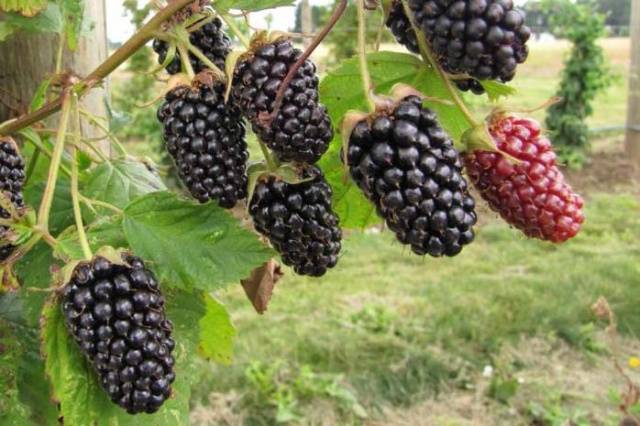
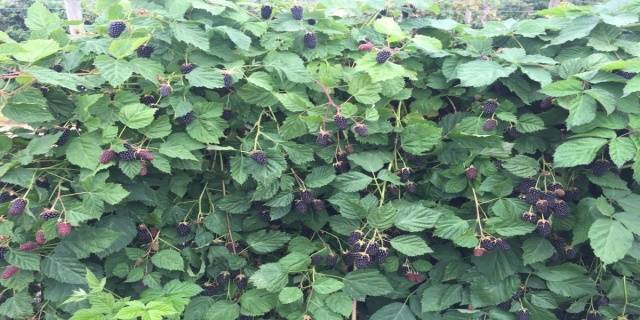
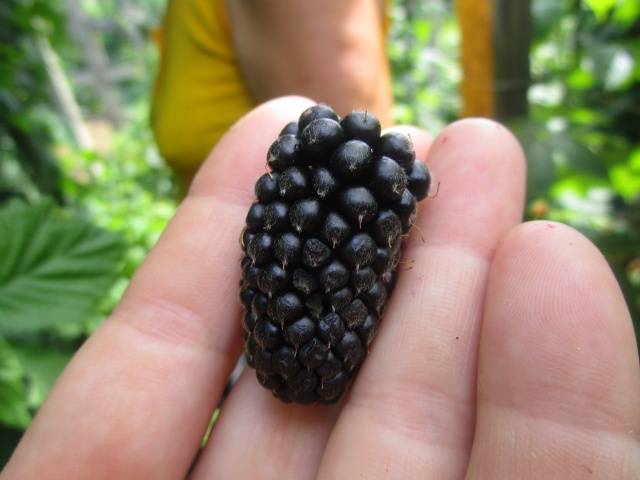
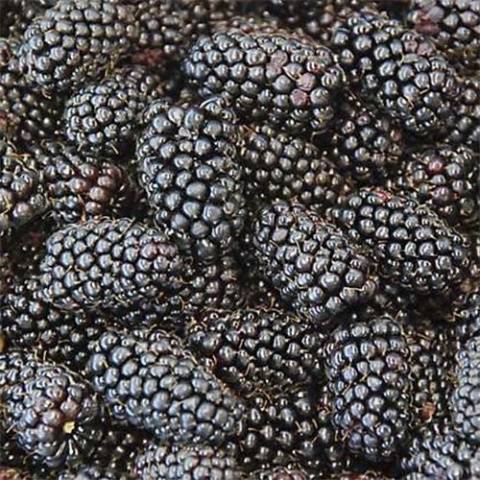
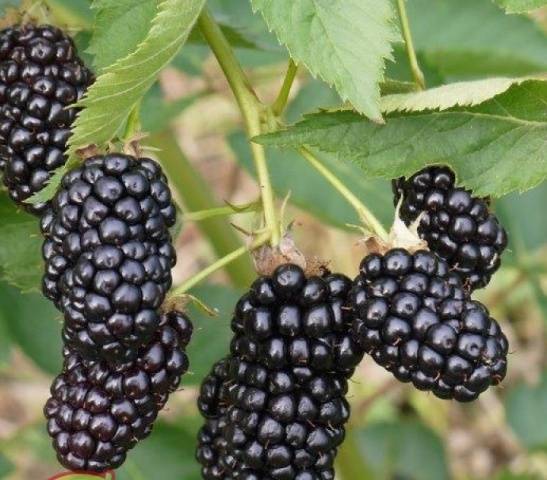

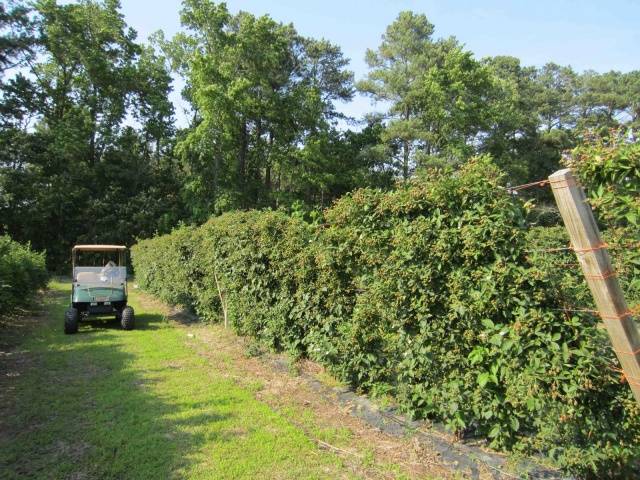

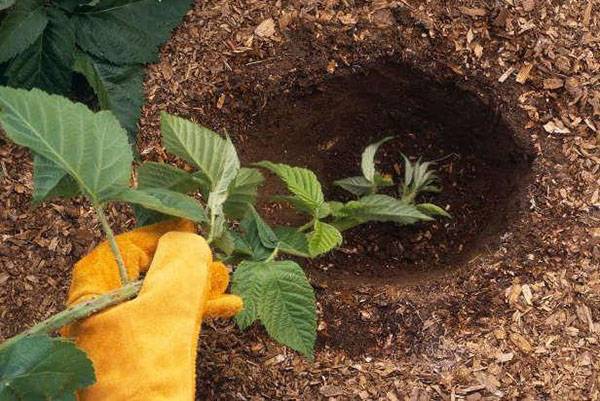
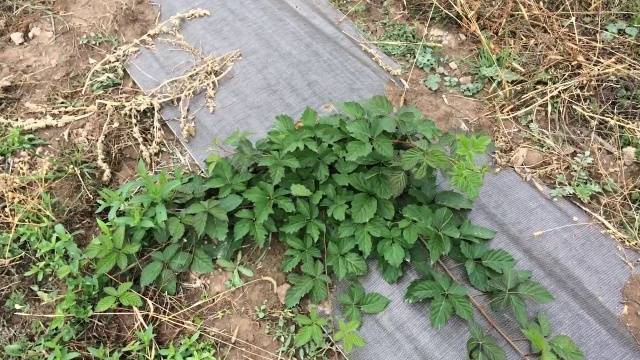
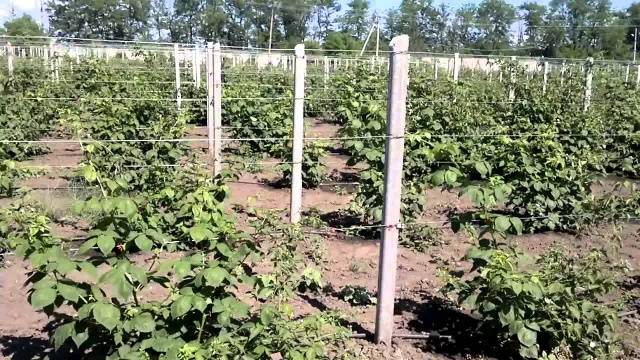

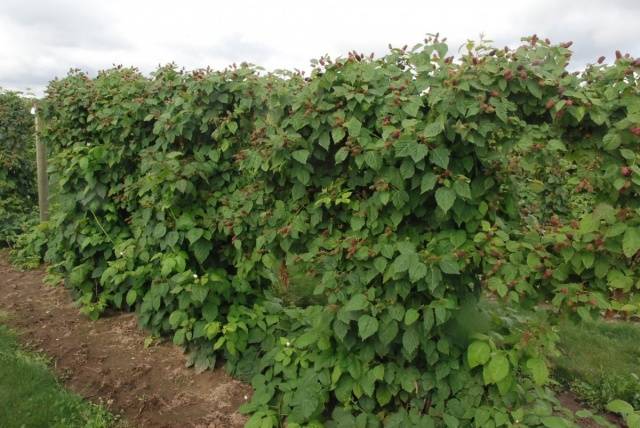
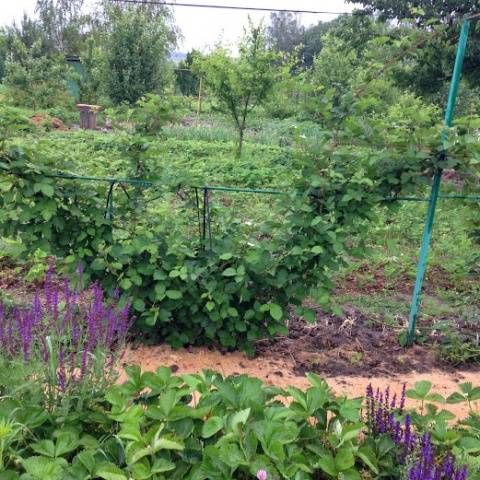
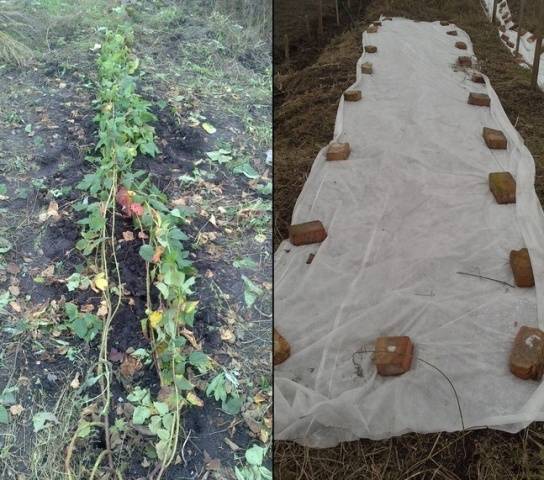
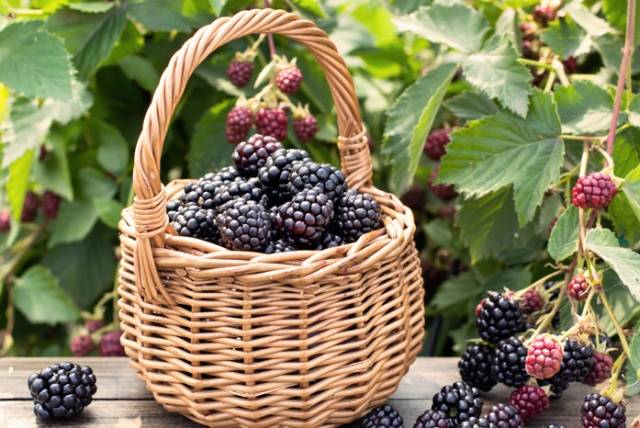

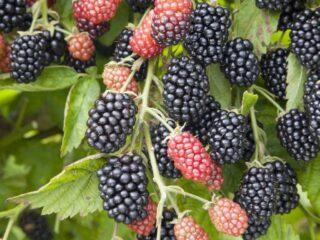




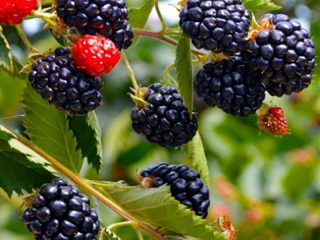

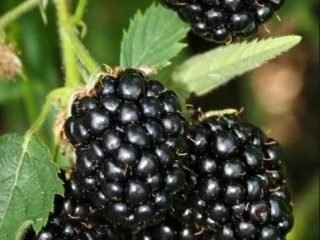
In the spring, old branches are cut out, and some of last year's are removed, leaving 5-7 strongest ones.
In subsequent years, the procedure is repeated, cutting out old shoots in the early spring into a ring near the ground.
Is it possible to cut out old branches in the fall to facilitate the procedure for sheltering the seedling.